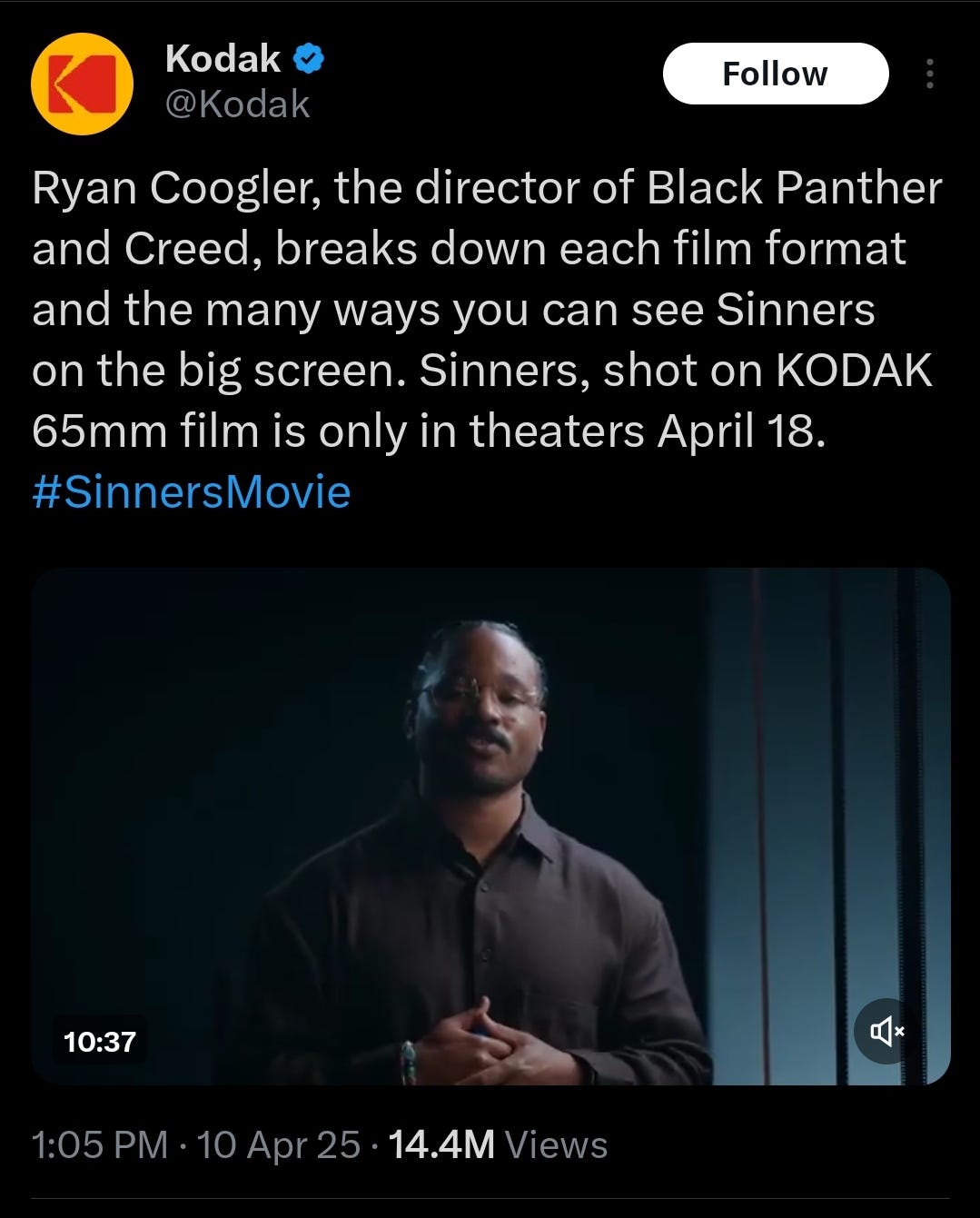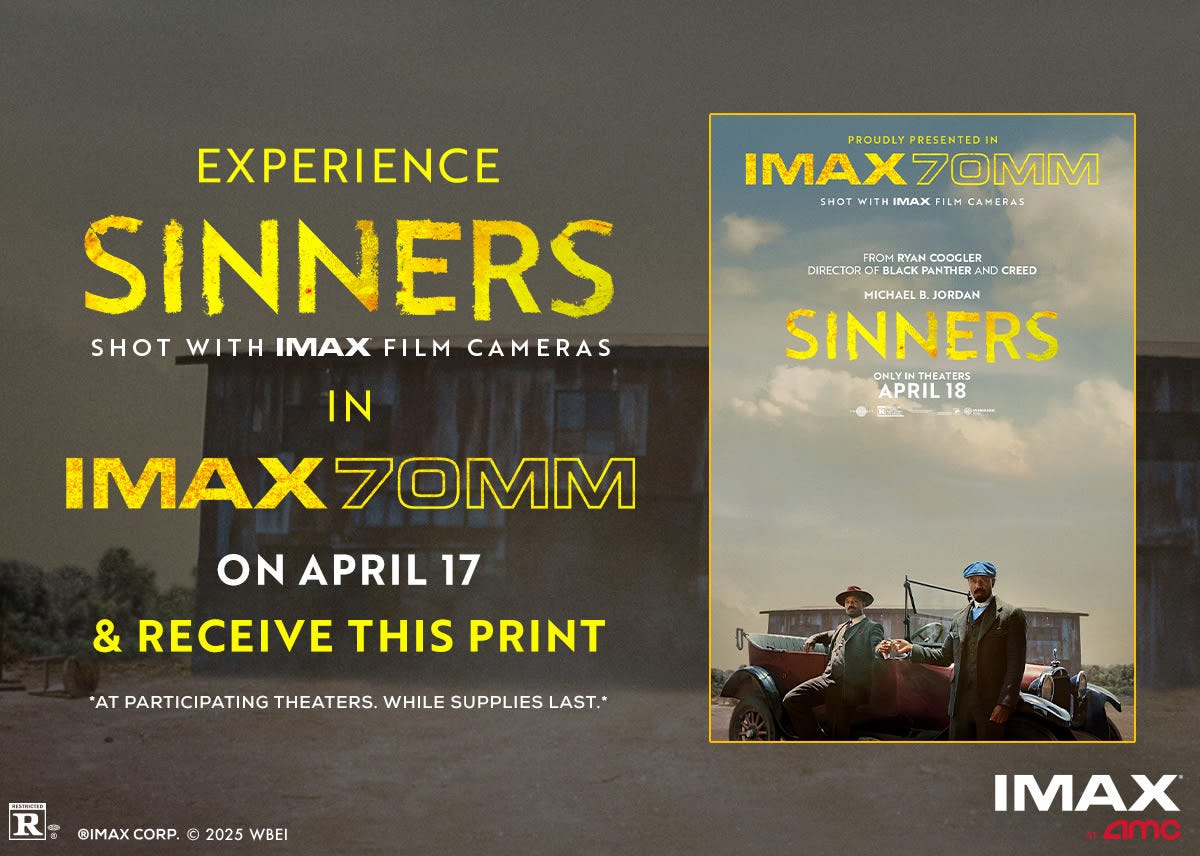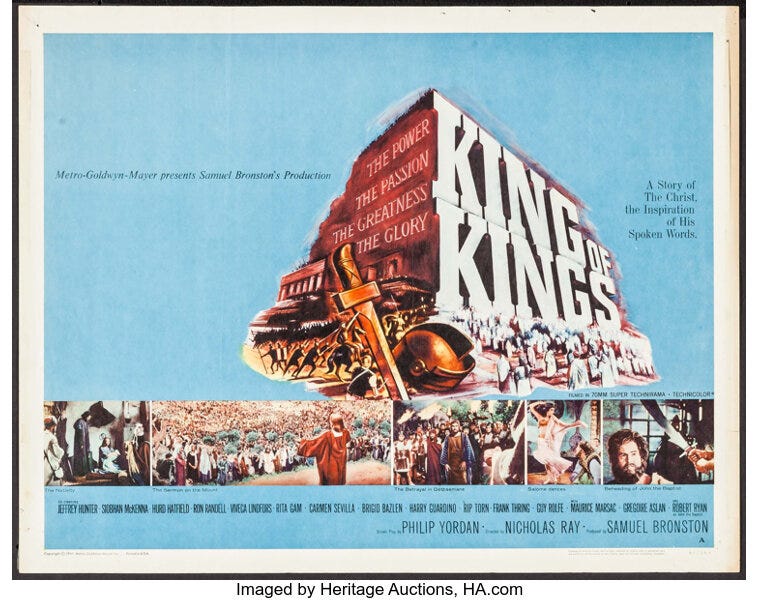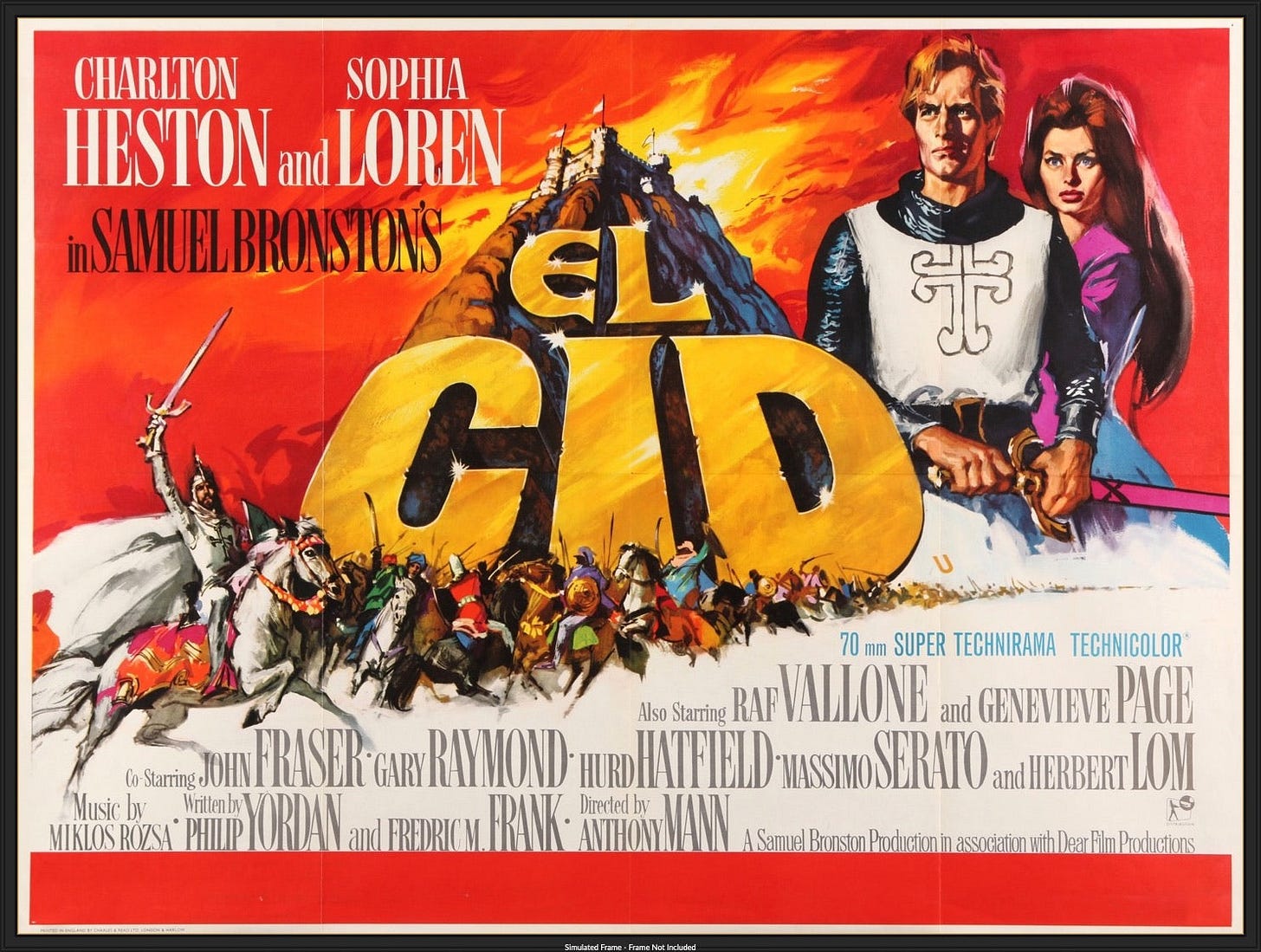With Ryan Coogler's Sinners opening this weekend, the build-up to the release led me to an eleven-minute viral sponcon video from Kodak, featuring the auteur breaking down all of the large-format theatrical options to see his film. A few months back, in a struggle to find a parallel to our current moment in film culture for my “Best films of the 2020s” blog, I made reference to the mid-to-late 1960s, when studio filmmaking had become outmoded and unhip, and young film students influenced by European art cinema revitalized American movies.
However, this promotional video made the historical parallel crystal clear; we are reliving the 1950s. In the middle of the 20th century, film studios were doing anything they could to compete with the comfort of television. The obvious choice was to produce what the small, black-and-white screen couldn't: grandeur. Cinemascope and other widescreen processes were developed and made popular, and color processes like Technicolor became rather standard fare, opposed to how color films existed as something of a special treat throughout the 40s. (Pedantic readers who are about to comment something about early two and three-strip technology before the 40s, I know. You are relieved of your duty). Studios made beleaguered epics, one more stale than the last, putting geniuses of the system into rather unchallenging and bloated scenarios. Anthony Mann made El Cid, Nicholas Ray did King of Kings, and John Ford even contributed to How the West Was Won. These efforts were in vain, and like so many historical empires of yore, Hollywood indulged in grandeur and decadence before its downfall.
TV hasn't gotten any smaller in the time since, but Hollywood film studios have gotten slower. Streaming shows have been the dominant mode of longform visual entertainment for a decade now. The much-bemoaned death of the mid-budget movie (for adults!) and franchise-ification of anything remotely profitable were the first dominoes to fall, but then came the fetishization of large formats. Instead of Orson Welles narrating the life of Jesus for three hours, or Otto Preminger and Paul Newman dramatizing the foundation of Israel, we have Tom Cruise trying to kill himself on camera, and telling us that we're not *actually* seeing him do it unless we're seated in an IMAX theater. Large-format gimmicks are all that the studios have left to offer beyond the realm of pre-existing IP. Films like Sinners, Oppenheimer, Nope, and M:I - Dead Reckoning were promoted with didactic campaigns that inform audiences about IMAX's proprietary camera/projection technology. This is because condescending studio heads think that the only way to peel White Lotus and The Pitt viewers off the couch and get them into the theaters is to eventize the act of going to the movies, promising a product that you'll never truly understand unless you experience it in a theater whose screen expands and contracts in aspect ratio throughout the runtime.
So, now that studio filmmaking is back to 1950s and early 60s, minus all the master directors, what can we do? Well, we can't send people like Vincente Minnelli to Italy and recreate Hollywood on the Thames, because, if he exists, we're already sending him to Bulgaria or Greece or New Mexico for tax incentives. As film viewers, are we to simply keep our heads down and put our money where our mouths are, supporting “real movies”? Well, unfortunately that's what film media will tell you to do. With the release of every single film that isn't part of a franchise or made for children, there is a never-ending chorus of film tweeters treating a movie ticket purchase like a form of social protest. Get real. A market solution for a cultural problem? Neoliberalism aside, our current Epic Fail Economy has no room for market solutions.
I'm not saying that I do have a solution for the industry, but I have something to hold over frustrated film viewers. Crack open the history books. Most cinephiles I come across online haven't gone all that deep beyond the tier-one masterpieces when it comes to John Ford, Francois Truffaut, Clint Eastwood, Yasujiro Ozu, Sam Fuller, Jean-Luc Godard, Chantal Akerman, Brian de Palma, or any of the other true artists that make the medium worthwhile. Take matters into your own hands. You can't change the film industry, but you can be the cinephile that you want to see in the world. Don't settle for what the algorithm tells you. Find actors and directors that you like, and cross off each and every movie they've ever been involved with. Look to the underground, beyond the festivals and internet hype trains. Read film criticism, and by film criticism, I don't mean reviews of new movies published on weekend deadlines by IndieWire or the somehow-not-extinct AVClub. Read people who reckon with the near-century of talking pictures we have at our disposal, and even some of the silent ones. Be your own artistic curator. Trust me, the first time you watch a masterpiece of your own choosing, rather than one that Criterion Channel has highlighted for the month, you'll feel artistically and intellectually enriched within a medium that just keeps getting dumber.










WRT people buying tickets as social protest, I’m reminded of that Silver Jews line:
“Punk rock died when the first kid said ‘Punk’s not dead!’”
studio stupidity aside, i’ve never understood imax. on a very basic level why are we making hoyte van hoytema walk around with that stupid fucking camera just for the movie to be majority seen on dcp. and, do audiences by and large know or care what imax is? i think they think it’s what science movies are from children’s museums of their youth. challengers is my favorite movie of last year but i saw it in imax and was like why is this an imax and also guess what the theater was empty. idk just like what are we doing just watch the fucking movie this battle over format is over